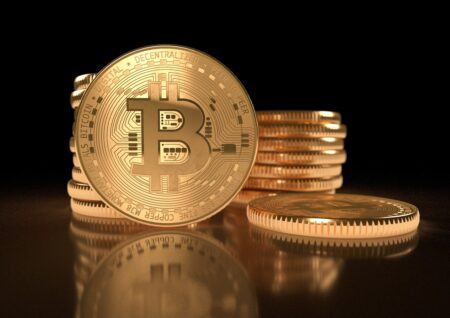Written by: Aaron Vick | Muti-X Founder, Web3 Futurist, Technology Evangelist, Author of Inevitable Revolutions: Secrets and Strategies for a Successful Business & more
NFT projects are amazing technological and behavioral case studies in feeding addictive behavior& gamifying the race to be early members of a project. Why would anyone want to be early in the project? Well, for starters, it may allow users to mint an NFT early at a cheaper price than the public mint providing monetization opportunities for the early birds to mint a few, sell a couple, and keep their good ones.
What is an NFT?
NFTs stand for “Non-fungible tokens” meaning each one of them is unable to be substituted by another. With fungible tokens, no value is forfeited if one token is traded for another, meaning one BTC will always be equal to one BTC. Every NFT is unique, however, and so is its value.
The idea for NFTs originated at a hackathon back in 2014 by Anil Dash and Kevin McCoy as a way to track and authenticate art. Since then, the use of NFTs has exploded beyond just art such as musicians uploading their music as NFTs.
Additionally, NFTs have become like access passes as projects begin to expand into both real-world and meta-based utilities. As an example of using an NFT to tie into the real world, Bored Breakfast Club launched an NFT, and holding one provides you access to free coffee shipments throughout the year.
Why are folks willing to “grind”?
What makes an NFT legendary or great within an NFT collection? Well, there are two ways most people judge their NFTs: Rarity ranking and aesthetics. NFT collections such as Bored Ape Yacht Club (& hundreds more) are created by computer code combining layers of art to output thousands of similar images, some are simply more aesthetically pleasing to folks. Some may have a different mouth type, clothes, background color, and accessories like an earring or slice of pizza which are combined to establish the uniqueness of that individual NFT.
We all know the cliche “beauty is in the eye of the beholder.” So, if someone really enjoys the way an NFT looks, many times they will purchase it and keep it as their forever NFT regardless of the rarity. Now, rarity rankings are created by the number of traits that an NFT may have as described above.
The computer will output the rarity score for each property or trait that the NFT has based on the rest of the collection. As an example, there are only 42 apes wearing a black suit and tie within the collection of 10,000 Bored Ape Yacht Club NFTs compared to 1,886 apes that are in their natural fur.
The rarity of these properties combined with the other traits establishes the rarity score; however, that doesn’t guarantee that they are always the most aesthetically pleasing.
As NFT collections are limited in supply and have a spectrum of rarity, one can see the gamification and desire to be part of the group early who gets a chance, or many chances, to blindly take chances to mint an NFT that may be a high ranking rarity at a cheaper price than the rest of the public.
What exactly is “Grinding” for access?
Ok, but what is the issue with rewarding early members with special privileges? We all want some type of exclusivity. Well, as more and more projects come online fighting to grow their communities, the space has started to see a race-to-the-bottom with regards to how these projects gamify access to such lists.
Grinding did not seem to originate within the NFT space. It means doing something in a repetitive manner similar to the common expression “keeping your nose to the grindstone.” This seems to be based on the earliest known reference found in John Frith’s A Mirrour or Glasse to Know Thyselfe in 1532: “This Text holdeth their noses so hard to the grindstone, that it clean disfigureth their faces.”
The process of grinding within the NFT world is to log a particular number of chat interactions that the system monitors within platforms like Discord. The more you “grind”, the more levels you obtain and can unlock roles such as access to a pre-mint list. This can be a grueling task as many projects have continued to ratchet up excessive grinding requirements such as reaching very high levels.
Projects implement bots such as mee6 that allow discord admins to create levels based on the experience points (XP). As an example of what excessive leveling looks like, it would take someone sending an average of 13,419 messages to reach the level of 50 in a Discord server, per the online mee6.xyz Level Calculator! This is in addition to the fact that many Discord servers only allow XPs to be gained within various time frames where users may not be able to send more than one message until the clock resets.
Community Backlash
While the tactic of gamifying access to early lists may serve the goal of “building” the community early in the pre-mint phase – & it creates a perspective that the chats are always active with members – it may not hold the community together once the mint is over.
Many times, the folks grinding for early access are not looking for a community at all, but rather a quick dollar as they can get in early, mint a number of NFTs, then flip a few of them at or less than the public mint price in order to cover their initial costs. However, the twitterspace has exploded with angry posts (as well as memes) with respect to these ungodly requirements.
One example is from Twitter handle @carsonturner who notes “A new project was kind enough to give me 3 WL spots to handout… Go hike the Appalachian Trail. First three to finish have a chance for the discord invite.”
It is clear that projects have been facing ways to capture community within the sea of daily projects launching so many are resorting to ratcheting up requirements versus creative adjustments
Of course, many folks may enjoy chatting with new and like-minded community members about a project they find exciting. However, projects have been pressuring the community to become grinders to reach very high levels that create an influx of “gm, I’m good, wbu” texts, the creation and use of bots that users can program to automatically post random chats through the day, and even some reports of users sub-contracting the chat out to others.
Performing a quick search on Fivrr while researching this topic led to hundreds of folks offering their “grinding” capabilities starting as low as $5 USD. What results is that the “community” implodes after an initial pre-mint run by the project once the grinders immediately mint then flip on the secondary market regardless of any further proposed mission or purpose of the project.
Mental Toll
This gamification creates an excessive mental toll on many users which many are under the age of 34 and average between 18-24 years old per an April 2021 study by CivicScience. One physician turned NFT founder, Dr. Taylor Brana, has an NFT project focused on reducing gambling and addictive behavior in order to create a healthier community and sustain the project post mint.
The idea of leveling up isn’t new to NFTs as we have seen these game mechanics introduced through video games for quite some time. While excessive grinding may not turn everyone into an addict, grinding certainly does ping the “reward center in the brain [that] releases dopamine in response to a pleasurable experience or hyperarousal” as noted by the Mayo Clinic.
Many users jumping in to grind will be forced into required Discord screen time hoping to hit that dopamine release as moderators drop giveaways and leveling up requirements.
Again, grinding may not result in addiction but seems to be self-reinforcing as the fast-paced NFT world where those who may be grinding in multiple projects could experience extreme highs and lows of making & missing acceptance to these lists. This definitely appears to mimic the experiences one may have in real world situations like casino gambling.
In 2018, there was quite a discussion worldwide with respect to game mechanics that enable certain behaviors that exacerbate those who may struggle with addiction. German Lopez notes in a Vox article that “World Health Organization (WHO) for the first time recognized “gaming disorder” in the 11th Revision of the International Classification of Diseases (ICD-11).
In doing so, the WHO joined the American Psychiatric Association (APA), which had previously added “internet gaming disorder” as a phenomenon worthy of more research in the Diagnostic and Statistical Manual of Mental Disorders (DSM-5).”
NFT Projects Changing the Game
So what do projects need to do? While any marketing effort is a bit of a dice roll to entice folks to be apart of your project, continuing to ratchet up grinding efforts isn’t the only tactic. Dr. Brana has teamed up with developers, artists, and community managers to create Shell Shakaz. their mission is to “remind you that it’s ok to slow down, take a breath, and enjoy the process with like-minded individuals.”
In a February 2022 Twitter Spaces, Dr. Brana noted Shell Shakas would be doing mint drops where they have scheduled 24-hour blocks to mint 200 one day, 200 another, and so on. They also are limited the minting capabilities for each wallet to minimize mass minting and flipping so that holders would focus more on the long-term utility of the NFT versus quick dopamine hit via mint-and-flip.
However, the Shell Shakaz are not alone in recognizing that these excessive grinding requirements have distorted the reason behind the community chat rooms. Other projects such as Lions of Zathena and BrandVerse have also taken a more subtle approach to build their communities that should have a lasting effect once their public mints conclude.
Lions of Zathena regularly hold book club nights and dance parties within their discord channel inviting the community to come to enjoy time with one another while also rewarding various individuals with airdrops and early access spots.
BrandVerse is also looking for alternative ways to embrace Web3 technology to keep users engaged. They specifically harness the use of POAPs, proof of attendance protocol, and provide chances to obtain POAPs through attending special online meetings. Early followers who obtain these early POAPs are tracked by Brandverse and will be given special access to airdrops, merchandise, or other exclusive items reserved for those holders.
Other groups have fully embraced bringing medical support into the NFT and meta sphere. ApeDads began as a Bored Ape Yacht Club derivative NFT project yet post-mint quickly moved to implement mental health awareness specifically focused on dads. The ApeDads now hold regular polls within their private discord dad channel to determine what topics they should discuss and then hold weekly group meetings with a licensed therapist.
Another group, CryptoDocsNFT, has gone 100% into the medical offering. Their project has acquired land in and is “building a virtual reality HIPAA compliant telehealth clinic with real doctors”. They have partnered with at least one existing telehealth company, Health Alliance Network, and are building a virtual medical hub within the Netvrk.co world.
Conclusion
The NFT community is at a crossroads. It can be a highly addictive and competitive space, but projects and their community members are using new techniques to build lasting communities. How do we continue to create community adoption & reward the early adopters while not burdening them with excessive mental stress or gambling-like mechanisms?
NFTs are becoming a more common way to bring newcomers into web3. Hopefully, access to new NFT collections can be structured with more creative and practical ways to build trust & communities beyond the premint grind.
Featured image via Unsplash.









